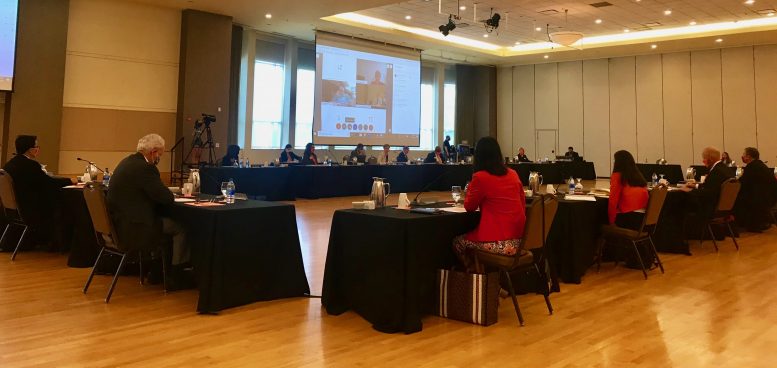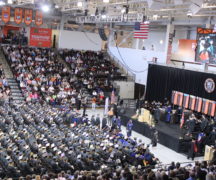By DAVID DUPONT
BG Independent News
The Bowling Green State University trustees on Friday approved tuition increases of 2 percent for some continuing students, and set tuition for the class of students entering this coming fall.
The 2-percent increase, or $104.40 per semester for full-time students, would apply to 3,300 full-time students in their fourth and fifth years at BGSU. That will bring tuition to $5,505.60 per semester.
Part-time, eCampus or distance and extended campus undergraduates will pay $8.70 more per credit hour.
For the incoming class of 2024, the tuition will be 4.1 percent higher than what students who entered in 2019 paid, or $12,089 annually. Those students’ costs are guaranteed to remain the same over the next four years.
This is BGSU’s third cohort of Falcon Guarantee students.
The increase for continuing students is expected to generate an additional $842,000 annually, and the increase in the Falcon Guarantee will generate $1.5 million annually.
There are no increases in graduate fees and no increase in the fee paid by out-of-state students
Chief Financial Officer Sheri Stoll also presented a budget reflecting the university’s declining revenues.
Stoll said that the university entered the pandemic in strong financial shape. She credited the university’s efforts with recruiting, retaining, and graduating students.
State support of instruction funds are distributed based on those factors, and BGSU has been able to capture more of that pool of money relative to other state schools because of its performance.
For fiscal year 2021, which begins July 1, BGSU will receive $65.8 million in SSI, a decrease of about $14.2 million, almost 18 percent.
The university also expects to take in $13.4 million less in tuition and fees, a 6.3-percent decrease.
In May, the university cut its budget by $26.5 million through both permanent and temporary reductions. The permanent cuts came through the non-renewal of 17 faculty members and the layoffs of 30 administrative staff members and 72 classified staff members. Temporary reductions come in the form of furloughs, reductions in travel, supplies, utilities, library spending, and equipment as well as tapping the operating contingency. The baseball program was also eliminated, but revived when donors raised the $1.5 million to keep it alive.
Stoll said more reductions will be needed next year.
The budget calls for spending $395,032,113. That’s $32.3 million, 7.5 percent, less than last year. Revenue is projected at $397,543,492.
These calculations are built on the assumption that the incoming class in fall will be 5 percent smaller than last year, and that 7 percent fewer students will return compared to last year.
Cecilia Castellano, vice president for enrollment and student outcomes, said it was too early to know what will happen in fall, though it appears that summer enrollment has been good.
Still clouding the picture is the uncertainty of caused by the surge of new coronavirus cases going up in a number of states.





